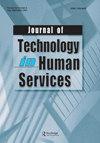Leveraging App Technology to Measure the Impact of Transportation Disadvantage: The Development of MyAmble
IF 1.5
Q2 SOCIAL WORK
引用次数: 2
Abstract
Abstract Widely used data-collection methods fail to fully capture the lived experiences and un-met travel demands of marginalized populations and those at disproportionate risk of experiencing transportation disadvantage (TD). This study describes an interdisciplinary collaboration between social work, civil engineering, and computer science on the development of a transportation data collection tool, MyAmble. The theoretical framework of social exclusion was used as part of the study design in order to better understand the process of marginalization as a result of inability to participate in wider society, in part through lack of transportation. Thus, MyAmble augments the best practices in transportation daily diary research using features designed to characterize and quantify latent travel demand among individuals experiencing TD, as well as the subjective impact of lack of transportation on quality of life and well-being. MyAmble includes several innovations – a daily digital trip planning that captures latent demand, a text-messaging based qualitative interview tool, a self-guided travel history survey, and a challenge logger. We describe the design process and implementation that occurred during a five-day pilot test and present a case study. Finally, findings from the case study suggest that MyAmble was able to successfully capture planned, unplanned, and unserved trips as well as the lived experiences of TD.利用应用程序技术衡量交通劣势的影响:MyAmble的发展
摘要广泛使用的数据收集方法未能充分捕捉边缘化人群和那些面临交通劣势风险的人群的生活经历和未满足的旅行需求。这项研究描述了社会工作、土木工程和计算机科学在开发交通数据收集工具MyAmble方面的跨学科合作。社会排斥的理论框架被用作研究设计的一部分,以更好地理解由于无法参与更广泛的社会,部分原因是缺乏交通而导致的边缘化过程。因此,MyAmble利用旨在表征和量化TD患者潜在旅行需求的功能,以及缺乏交通对生活质量和幸福感的主观影响,增强了交通日常日记研究的最佳实践。MyAmble包括几项创新——捕捉潜在需求的每日数字旅行计划、基于短信的定性采访工具、自助旅行历史调查和挑战记录。我们描述了在为期五天的试点测试中发生的设计过程和实施,并提供了一个案例研究。最后,案例研究的结果表明,MyAmble能够成功地捕捉到有计划、无计划和无服务的旅行以及TD的生活体验。
本文章由计算机程序翻译,如有差异,请以英文原文为准。
求助全文
约1分钟内获得全文
求助全文
来源期刊

JOURNAL OF TECHNOLOGY IN HUMAN SERVICES
SOCIAL WORK-
CiteScore
4.20
自引率
6.70%
发文量
6
期刊介绍:
This peer-reviewed, refereed journal explores the potentials of computer and telecommunications technologies in mental health, developmental disability, welfare, addictions, education, and other human services. The Journal of Technology in Human Services covers the full range of technological applications, including direct service techniques. It not only provides the necessary historical perspectives on the use of computers in the human service field, but it also presents articles that will improve your technology literacy and keep you abreast of state-of-the-art developments.
 求助内容:
求助内容: 应助结果提醒方式:
应助结果提醒方式:


